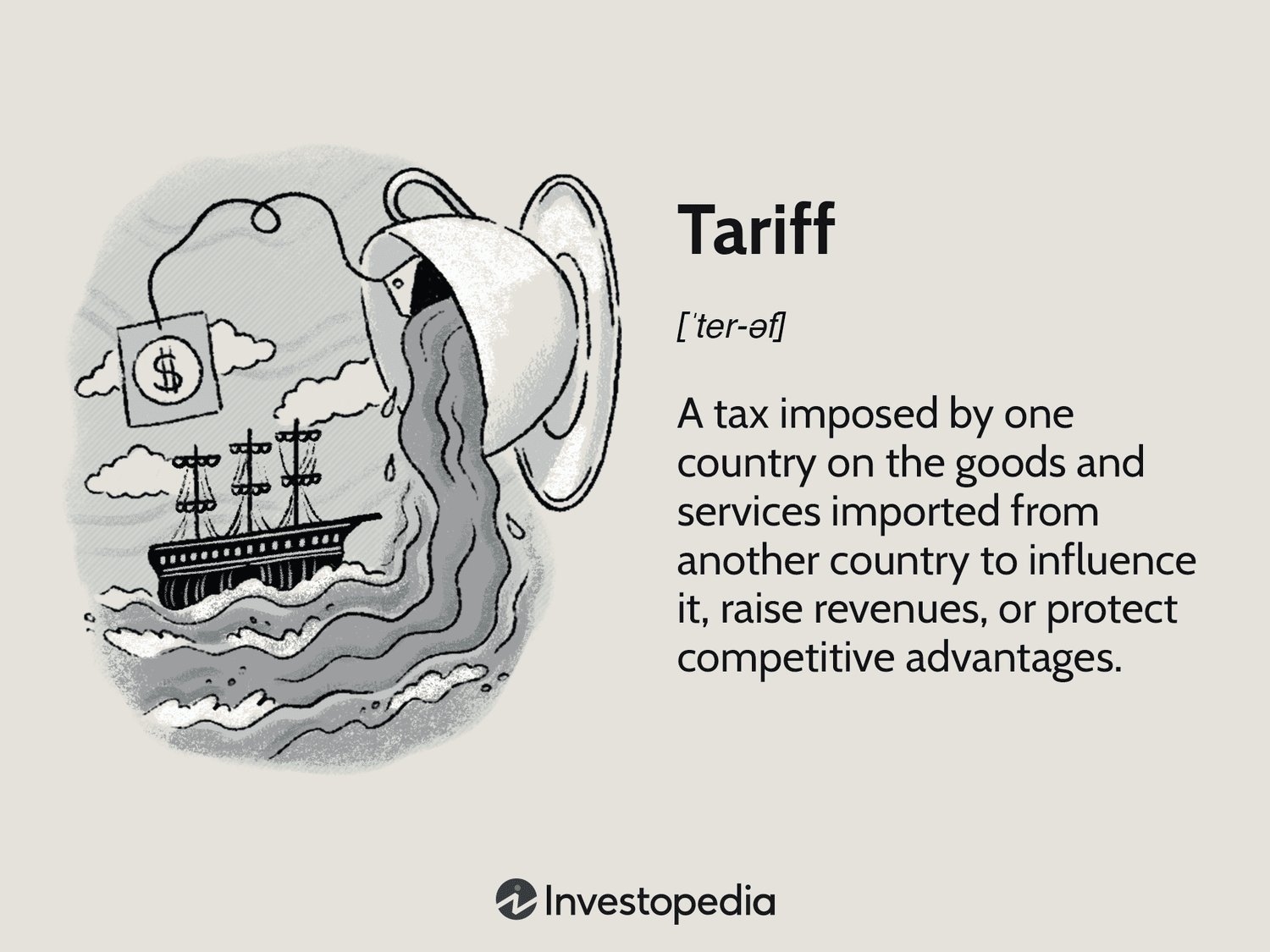Portfolio rebalancing may sound like a complex financial term, but it is actually a simple and effective strategy that every investor should understand. So, what exactly is portfolio rebalancing? It is the process of realigning your investment portfolio to ensure that it stays in line with your desired asset allocation. By periodically reviewing and adjusting your portfolio, you can maintain a healthy balance, minimize risk, and potentially maximize returns. In this article, we will delve into the basics of portfolio rebalancing, helping you grasp this essential concept without any confusion. Let’s get started!
Understanding the Basics of Portfolio Rebalancing
The Importance of Portfolio Rebalancing
Portfolio rebalancing is a crucial aspect of successful investment management. It involves periodically adjusting the asset allocation of a portfolio to maintain the desired risk and return profile. By rebalancing, investors can realign their investment holdings with their long-term goals and tolerance for risk.
Rebalancing allows investors to take advantage of market fluctuations and maintain a diversified portfolio. It helps to prevent the portfolio from becoming overexposed to certain assets that may have performed well in the short term but carry higher risk. Additionally, it ensures that the portfolio stays aligned with the investor’s investment strategy and objectives.
Understanding Asset Allocation
Before diving into the details of portfolio rebalancing, it’s important to grasp the concept of asset allocation. Asset allocation refers to the distribution of investments across various asset classes, such as stocks, bonds, cash, and real estate. The specific allocation is determined by factors such as risk tolerance, investment goals, and time horizon.
A well-diversified portfolio typically includes a mix of different asset classes to spread out risk and potentially enhance returns. The allocation can be conservative, aggressive, or balanced depending on the investor’s preferences and objectives. However, over time, market movements can cause the asset allocation to deviate from the desired targets, leading to the need for rebalancing.
The Process of Portfolio Rebalancing
Portfolio rebalancing involves several steps to ensure that the asset allocation remains in line with the desired targets. Here’s a detailed breakdown of the process:
1. Set Target Allocation: The first step in portfolio rebalancing is to establish a target allocation that aligns with your investment strategy. This involves determining the ideal percentages of different asset classes in your portfolio.
2. Monitor Portfolio: Regularly monitor the performance of your portfolio and track the actual allocation of assets. It’s crucial to keep an eye on the percentage of each asset class to identify any significant deviations from the target allocation.
3. Determine Thresholds: Establish thresholds or tolerances that trigger the need for rebalancing. For example, if your target allocation for stocks is 60%, you may set a threshold of 5% deviation. If the stock allocation exceeds 65% or drops below 55%, it’s time to rebalance.
4. Identify Rebalancing Method: There are different strategies for rebalancing, including time-based and threshold-based approaches. Time-based rebalancing involves setting specific intervals, such as quarterly or annually, to rebalance the portfolio. Threshold-based rebalancing, as mentioned earlier, relies on predetermined thresholds to trigger rebalancing.
5. Liquidate or Purchase Assets: Once it is determined that rebalancing is necessary, you will need to sell or buy assets accordingly. If a particular asset class is overrepresented, you may need to sell some of it and reinvest in the underrepresented asset class to restore the target allocation.
6. Transaction Costs and Taxes: While rebalancing, it’s important to consider transaction costs, such as brokerage fees, and tax implications. Selling assets may result in capital gains, which could trigger tax liabilities. Evaluate the impact of transaction costs and taxes to determine the most efficient rebalancing strategy.
The Benefits of Portfolio Rebalancing
Portfolio rebalancing offers several benefits for investors. Let’s explore some of the key advantages:
1. Risk Management: Rebalancing helps manage risk by preventing the portfolio from becoming overexposed to a single asset class or sector. By maintaining a diversified portfolio, you can minimize the impact of market downturns on your overall investment.
2. Long-Term Discipline: Rebalancing instills discipline in sticking to your investment strategy. It prevents emotional decision-making and helps you avoid chasing short-term performance or succumbing to market volatility.
3. Capitalizing on Opportunities: During market fluctuations, certain asset classes may outperform others. Rebalancing allows you to take advantage of these opportunities by selling some of the outperforming assets and reallocating them to underperforming assets. This approach promotes the buy low, sell high principle.
4. Aligning with Objectives: Over time, your financial goals and risk tolerance may change. Rebalancing ensures that your portfolio remains aligned with your evolving investment objectives. It helps you stay on track to meet your long-term financial goals.
5. Maintaining Diversification: Rebalancing preserves the diversification benefits of a portfolio. It prevents the concentration of assets in a particular class or sector, reducing vulnerability to unexpected market events.
Common Rebalancing Strategies
There are various strategies and approaches to portfolio rebalancing. Here are a few commonly used methods:
1. Time-Based Rebalancing: This approach involves rebalancing the portfolio on a predetermined schedule, such as quarterly, semi-annually, or annually. It disregards market conditions and focuses on maintaining the desired asset allocation at regular intervals.
2. Percentage-Based Rebalancing: In this method, rebalancing is triggered when the allocation of a specific asset class deviates by a certain percentage from the target allocation. For example, if the stock allocation exceeds 5% of the target, rebalancing would be initiated.
3. Cash Flow Rebalancing: This strategy utilizes new cash inflows or outflows to rebalance the portfolio. For instance, if you receive dividends, you can use them to purchase assets in underrepresented areas.
4. Hybrid Rebalancing: Some investors combine different rebalancing strategies to create a hybrid approach. This can involve a combination of time-based, percentage-based, and cash flow-based rebalancing methods to suit their specific needs.
It’s essential to choose a rebalancing strategy that aligns with your investment goals, risk tolerance, and time commitment.
Tracking and Evaluating the Results
After implementing a rebalancing strategy, it’s crucial to track and evaluate its effectiveness. Consider the following aspects:
1. Performance Analysis: Assess the overall performance of your portfolio after rebalancing. Compare it to relevant benchmarks and assess if the rebalancing strategy has enhanced returns or minimized risk.
2. Risk Assessment: Evaluate the risk profile of your portfolio before and after rebalancing. Determine if the changes have aligned the risk exposure with your desired level.
3. Rebalancing Frequency: Monitor the frequency of rebalancing to determine if it suits your investment preferences. Adjust the rebalancing schedule if needed.
4. Portfolio Review: Regularly review your investment objectives and risk tolerance to ensure they are still aligned with your current circumstances. Consider making any necessary adjustments to your asset allocation.
5. Seek Professional Advice: If you find portfolio rebalancing complex or overwhelming, consider consulting a financial advisor to help you create and implement an appropriate rebalancing strategy.
Portfolio rebalancing is an essential practice for maintaining a diversified and risk-managed investment portfolio. By periodically adjusting the asset allocation to align with the desired targets, investors can enhance long-term returns and minimize exposure to market volatility. Understanding the basics of portfolio rebalancing, including asset allocation, the rebalancing process, and different strategies, empowers investors to make informed decisions and achieve their financial goals.
Remember, portfolio rebalancing is not a one-time event but an ongoing process. Regular monitoring, evaluation, and adjustments are crucial to ensure that your investment portfolio remains aligned with your changing objectives and risk tolerance.
Portfolio Rebalancing – Stock Rebalancing Explained
Frequently Asked Questions
Frequently Asked Questions (FAQs)
What is portfolio rebalancing?
Portfolio rebalancing is the process of realigning the weights of assets in your investment portfolio to maintain the desired asset allocation. This involves periodically buying or selling assets to bring the portfolio back to its target allocation.
Why is portfolio rebalancing important?
Portfolio rebalancing is important because it helps to manage risk and maintain the desired level of diversification in your investment portfolio. It ensures that you are not overly exposed to certain assets or sectors and helps to maintain a disciplined approach to investing.
How often should I rebalance my portfolio?
The frequency of portfolio rebalancing depends on your investment strategy and goals. Generally, it is recommended to rebalance at least once or twice a year. However, some investors prefer more frequent rebalancing, such as quarterly or even monthly, while others may rebalance less often, like every few years.
What triggers the need for portfolio rebalancing?
The need for portfolio rebalancing can be triggered by various factors, such as significant changes in the market, a change in your investment goals or risk tolerance, or when an asset class deviates significantly from its target allocation. It is important to regularly monitor your portfolio to identify such triggers.
How do I determine my target asset allocation?
Determining your target asset allocation involves considering your financial goals, time horizon, risk tolerance, and investment strategy. It typically involves allocating your investments across different asset classes such as stocks, bonds, and cash, based on your desired level of risk and expected returns.
Should I rebalance by selling winners or losers?
The approach to rebalancing by selling winners or losers depends on your investment strategy and goals. Some investors prefer selling the overperforming assets (winners) to bring them back to their target allocation, while others prefer selling the underperforming assets (losers) to take advantage of potential future gains. There is no one-size-fits-all approach, and it is recommended to consult with a financial advisor.
What are the potential benefits of portfolio rebalancing?
Portfolio rebalancing offers several potential benefits, including maintaining the desired asset allocation, managing risk, reducing the impact of market volatility, and taking advantage of opportunities to buy undervalued assets. It helps to keep your investment portfolio aligned with your long-term financial goals.
How can I rebalance my portfolio effectively?
To rebalance your portfolio effectively, you should start by reviewing your current asset allocation and identifying any deviations from your target allocation. Determine which assets need to be bought or sold to bring the portfolio back to balance. Execute the necessary trades and monitor the portfolio regularly to ensure it stays aligned with your investment strategy. Consider consulting with a financial advisor for guidance.
Final Thoughts
Understanding the basics of portfolio rebalancing is crucial for effective financial management. By regularly reviewing and adjusting the allocation of your investments, you can maintain a balanced and diversified portfolio. It helps to mitigate risks and optimize returns over time. Through portfolio rebalancing, you can ensure that your investments align with your financial goals and risk tolerance. By monitoring asset classes and making necessary adjustments, you can stay on track and maintain a disciplined investment approach. Regularly reassessing and rebalancing your portfolio will help you navigate market fluctuations and achieve long-term success. So, understanding the basics of portfolio rebalancing is an essential skill for any investor.



